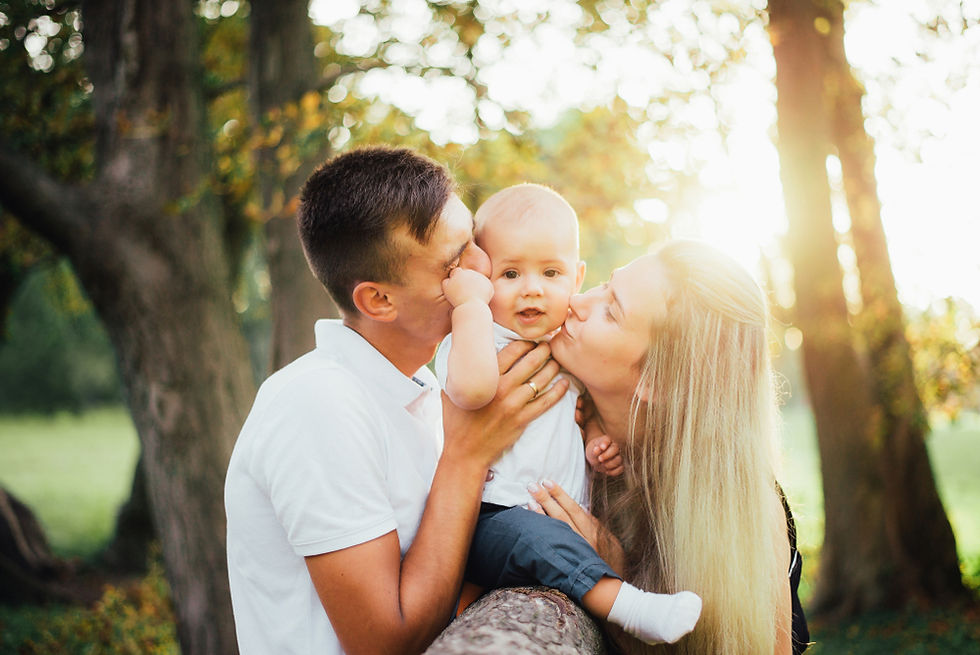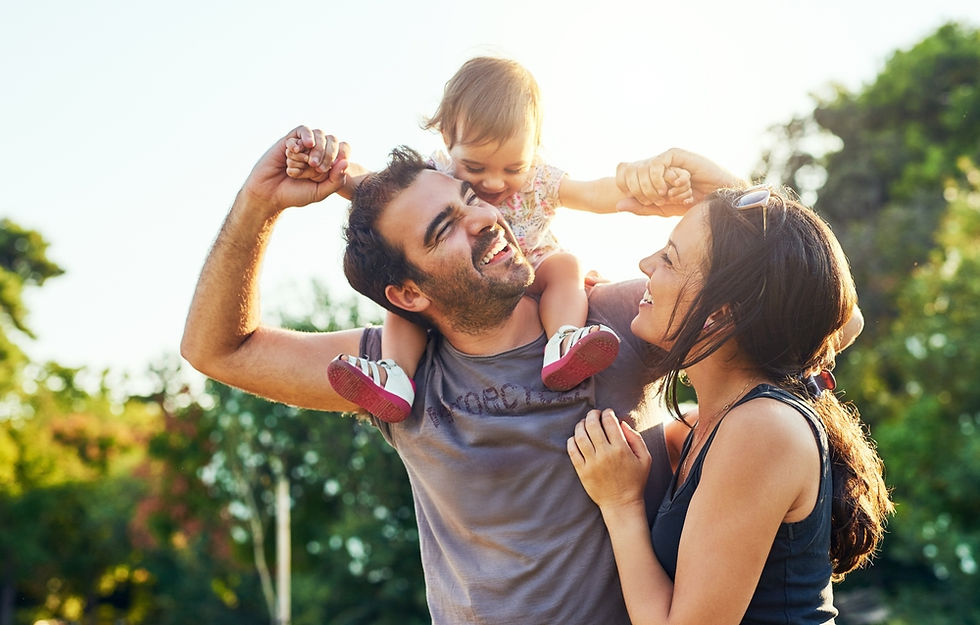Capturing Life as It Happens: A Guide to Candid Portrait Photography
- Jerry Lee
- 6 days ago
- 6 min read

Capturing life as it happens is one of the most rewarding aspects of portrait photography. Unlike posed shots, candid portraits freeze fleeting moments of genuine emotion, storytelling, and personality.
There’s a certain magic in catching someone mid-laugh, a thoughtful glance, or an unguarded interaction that creates images brimming with life and authenticity. For photographers who want to convey the raw, unfiltered essence of their subjects, candid portrait photography offers endless creative opportunities.
While candid portraits may seem spontaneous, achieving truly compelling results requires preparation, skill, and an observant eye. It’s not simply about pressing the shutter at random; it’s about anticipating moments, understanding your subject, and creating an environment where natural emotions can flourish.
In this guide, we’ll explore the techniques, gear, and mindset needed to master candid portrait photography while offering insights into how to beautifully present your images with gorgeous, high-quality prints. With that, let’s begin!
Understanding Candid Portraits Photography

A candid portrait captures real-life moments as they naturally unfold, rather than staging or directing a subject into a pose. These images are about authenticity, showcasing emotions, gestures, and expressions that might otherwise be missed in traditional portraiture. The charm of a candid portrait lies in its unpredictability, where small, often subtle details communicate the essence of the moment.
Candid portraits can be taken in virtually any environment, too. Streets, parks, at family gatherings, or during events are just a few examples. Yet, despite where the images are taken, they rely heavily on observation, timing, and a photographer’s ability to stay unobtrusive. The goal is to let subjects exist naturally in their space while still composing a visually compelling image. When done correctly, candid portraits are intimate snapshots of life that feel deeply personal and universally relatable.
The benefits of candid portrait photography extend beyond emotional impact. These images often have storytelling power, providing context and depth that posed images may lack. By capturing authentic interactions, photographers can create narratives that resonate with viewers, offering more than just a visual record but a genuine emotional experience.
Preparing for a Candid Session

Even though candid portrait photography emphasizes spontaneity, preparation is essential. Understanding your subject and environment before the shoot increases your chances of capturing meaningful moments. Scouting locations, considering natural light sources, and anticipating possible actions or interactions will allow you to stay ready when the right moment appears.
Equally important is establishing trust and comfort with your subject. While the best candid portraits appear effortless, subjects who feel at ease are more likely to reveal genuine expressions. Simple conversations, playful interactions, or shared activities can help people relax, making natural moments more accessible.
Preparation also involves planning your approach and mindset. Being patient, staying observant, and maintaining an unobtrusive presence are critical. Instead of imposing your vision on the subject, focus on capturing their authentic behavior and expressions. When these elements align, your candid portraits will naturally reflect life’s spontaneous beauty.
Choosing the Right Camera and Lens

For candid portrait photography, your equipment can significantly impact your results. Mirrorless cameras or DSLRs with fast autofocus and high burst rates allow you to react quickly to fleeting moments. Compact setups are preferable, as they minimize distraction and allow for more discreet shooting.
Lens choice is equally critical. Prime lenses like a 35mm or 50mm are excellent for candid portraits because they handle low-light situations well, create pleasing depth of field, and offer versatility without drawing too much attention. A slightly longer lens, like an 85mm, can also work for capturing moments from a distance, preserving natural behavior while still delivering sharp, detailed images. You don’t have to spend an arm and a leg to outfit your kit, either!
While gear matters, candid portrait photography is ultimately about observation and timing. Knowing your camera’s capabilities, practicing quick adjustments, and staying ready to capture decisive moments are all essential skills that complement the equipment you choose.
Lighting Tips for Natural Candid Shots

Lighting can make or break a candid portrait. Natural light often produces the most authentic and flattering results, so learn to use sunlight, window light, and shaded areas creatively. Overcast days are ideal for soft, even lighting, while golden hour can add warmth and dimension.
Avoid harsh, direct sunlight that can create unflattering shadows or overly bright highlights. Look for diffused light sources, reflections, or natural shade to enhance the subject without overwhelming the scene. Even subtle changes in angle or position can transform an image from ordinary to extraordinary.
In situations with limited natural light, consider using fill flash sparingly. The goal is to enhance the image without disrupting the candid feel. By staying mindful of light and its impact, you can elevate the emotion and mood captured in each candid portrait.
Posing Without Posing: Guiding Your Subject

While candid portraits are inherently unposed, subtle guidance can help elicit natural expressions. Encourage movement, interaction, or conversation instead of giving strict directions. Activities like walking, playing, or chatting can help subjects relax, creating moments ripe for capturing.
The key is balance: too much direction risks creating staged shots, while too little interaction may leave you waiting for the perfect moment. Observing micro-expressions, gestures, and spontaneous reactions allows you to capture the authenticity that defines candid portraits.
Engagement is also about listening and responding to the subject. Humor, encouragement, and playful prompts often lead to genuine smiles and unguarded moments, resulting in images that feel alive and relatable.
Capturing Emotion and Storytelling

Candid portrait photography thrives on emotion and storytelling. Look for gestures, glances, and expressions that communicate feelings or relationships. These elements often create the most compelling narratives, whether it’s the excitement of a child playing, the tenderness between family members, or the intensity of a performer in action.
Composition is critical to enhancing storytelling. Consider background context, framing, and depth of field to highlight the subject while keeping the environment relevant. Every element in the frame should contribute to the story, reinforcing the mood and intent of the image.
The beauty of candid portraits is their ability to evoke empathy and connection in viewers. When you capture genuine moments, you create images that resonate long after the shutter clicks, turning fleeting instances into lasting memories.
Overcoming Common Challenges

Candid portrait photography comes with unique challenges. Subjects move unpredictably, lighting can change, and environments may be cluttered or distracting. Success lies in anticipation, quick reflexes, and adaptability.
Distractions in the frame can often be managed by adjusting your angle, distance, or focal length. Shooting from a slightly elevated or lowered perspective can help isolate your subject while maintaining the candid feel. Timing is everything. Sometimes, a decisive split-second is all you have to capture the perfect expression.
Remaining unobtrusive is another essential skill. Avoid drawing attention to yourself with bulky equipment or overly directive behavior. A calm, patient presence allows you to observe and capture the natural flow of life without influencing it.
Presenting Your Candid Portraits

Once you’ve captured authentic moments, presenting your work thoughtfully can elevate its impact. We offer a variety of print options to showcase candid portraits beautifully. Glossy and luster papers, for example, highlight color and detail, while metallic paper adds drama and a subtle iridescence. For fine art photography, our Breathing Color® Fine Art Paper delivers a museum-grade, archival-quality finish that’s tough to beat!
Frames and matting can further enhance the presentation. Choose from classic wood frames like Box Natural or Box Gold, paired with matting options that focus attention on the image. Whether displayed at home or gifted, printing your candid portraits allows viewers to connect with the emotion and storytelling in a tangible way. Prints preserve the fleeting beauty of candid moments, giving them a lasting presence that digital images alone often lack.
Elevating your candid portrait photography through professional prints is an excellent way to celebrate both your artistry and the subject’s authenticity. By considering presentation as part of the creative process, your images gain additional depth, impact, and value.
An Art and a Craft

Capturing candid portraits is both an art and a craft. By combining technical knowledge, observational skills, and emotional sensitivity, you can create images that tell compelling stories and preserve fleeting moments of genuine expression. Every detail, from lighting and composition to subtle subject interaction, contributes to the authenticity that makes candid portraits unforgettable. Presenting these images as high-quality prints ensures that the stories and emotions they capture endure, allowing your artistry to be appreciated in both digital and physical forms for years to come.



Comments